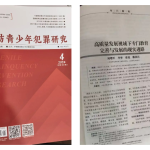Throughout human history, symbols have served as powerful tools that transcend language and culture, acting as spiritual shields and protective talismans. These symbols, carved into stone, woven into textiles, or inscribed in rituals, have historically embodied the collective desire for safety, health, and spiritual safeguarding. Today, their influence persists, demonstrating that the protective qualities attributed to ancient symbols remain relevant in modern life, often blending tradition with contemporary practices.
- The Concept of Protection in Ancient Cultures
- The Role of Divine and Mythological Figures in Symbolic Protection
- Symbolic Attributes and Their Deeper Meanings
- The Eye of Horus: An Illustration of Ancient Symbolic Protection
- From Myth to Modernity: How Ancient Symbols Continue to Protect
- Non-Obvious Dimensions of Symbolic Protection
- The Interplay Between Symbols and Belief Systems
- Case Studies: Symbols of Protection in Different Cultures
- Conclusion: The Enduring Shield of Ancient Symbols in Modern Life
The Concept of Protection in Ancient Cultures
Across civilizations, the universal human need for protection—both spiritual and physical—has driven the creation of symbols that serve as shields against harm. In ancient Egypt, amulets were believed to ward off evil spirits and disease, while in Chinese tradition, talismans invoked divine favor and safety. These symbols often embodied the divine or supernatural forces believed to influence everyday life, reinforcing cultural beliefs that certain shapes, images, or motifs could channel protective energies.
Research indicates that the psychological impact of such symbols can foster a sense of security and resilience, acting as mental anchors during times of uncertainty. The embodiment of protective qualities in symbols thus influenced not only spiritual practices but also social cohesion, as communities shared common symbols that represented collective safety and well-being.
The Role of Divine and Mythological Figures in Symbolic Protection
Many ancient cultures depicted their protectors as divine beings or mythological figures, believed to traverse different realms and safeguard human souls. For example, in Egyptian mythology, Ra the sun god represented life force and divine protection, while Anubis was associated with guiding and protecting the dead in their journey to the afterlife. These deities personified the abstract concept of protection, making it tangible through stories and rituals.
Such divine figures often symbolize the idea that protection extends beyond physical boundaries, encompassing spiritual realms. Their stories reinforce the belief that divine intervention offers a safeguard against chaos and evil, a concept that continues to influence modern perceptions of spiritual protection.
Symbolic Attributes and Their Deeper Meanings
Certain symbols are rich with layered meanings that extend beyond their simple appearance. Wings, for example, frequently symbolize divine protection and the soul’s ascent. In ancient Egyptian art, winged deities and protective amulets represented the divine's ability to shield and uplift individuals.
Similarly, the sun's daily cycle is a potent symbol of renewal and safeguarding life. Its consistent rise and set symbolize the perpetual cycle of protection and rebirth, emphasizing that life itself is under divine or natural safeguard. These attributes exemplify how symbols serve as visual representations of complex protective concepts, influencing both belief and behavior.
The Eye of Horus: An Illustration of Ancient Symbolic Protection
The visit page of the Eye of Horus exemplifies how ancient symbols continue to resonate today. Originating from Egyptian mythology, this symbol represents the restored eye of the falcon-headed god Horus, who lost his eye in a myth involving a fierce battle with Set. The eye was believed to embody health, restoration, and protection against evil, making it a powerful amulet worn by ancient Egyptians.
Today, the Eye of Horus is widely used in jewelry, tattoos, and spiritual practices, where it is believed to ward off negative energies and promote well-being. Its enduring popularity illustrates how a symbol rooted in myth can adapt to contemporary contexts, providing psychological comfort and a sense of safety.
Historical origins and mythological significance
The myth recounts that Horus’s eye was injured during his fight with Set, but was later restored through divine intervention. This narrative symbolizes healing, protection, and the triumph of order over chaos. The symbol’s distinctive markings resemble a stylized human eye, and its geometric form has made it a popular motif in amulets across millennia.
Modern beliefs and uses
In contemporary spirituality, the Eye of Horus is believed to ward off evil, enhance health, and protect the wearer from harm. Its presence in jewelry and tattoos often serves as a personal talisman, reinforcing the idea that ancient protective symbols retain their power in modern settings.
From Myth to Modernity: How Ancient Symbols Continue to Protect
The adaptation of symbols like the Eye of Horus illustrates the continuity of protective imagery. In today’s world, these symbols are often integrated into personal accessories, home decor, or digital iconography, serving as reminders of protection rooted in ancient wisdom.
Research in psychology suggests that symbols can influence subconscious perceptions, fostering resilience and a sense of safety. For instance, wearing a symbol like the Eye of Horus can act as a psychological anchor, helping individuals cope with stress or uncertainty, much like ancient civilizations relied on their symbols for reassurance.
Non-Obvious Dimensions of Symbolic Protection
Beyond their obvious protective symbolism, these icons play a role in mental health and emotional resilience. Studies have shown that exposure to meaningful symbols can reduce anxiety and foster emotional stability, especially in times of crisis.
Cultural differences influence how symbols are interpreted and utilized. For example, while the Hamsa hand in Middle Eastern cultures symbolizes protection against the evil eye, in East Asian traditions, talismans may focus more on balance and harmony. Despite these differences, the subconscious influence of symbols guides behavior and decision-making, often providing an unrecognized sense of security.
The Interplay Between Symbols and Belief Systems
Beliefs in the protective power of symbols reinforce their efficacy. Rituals, such as wearing amulets or performing protective rites, create a feedback loop where belief enhances the perceived power of symbols, which in turn strengthens societal and individual resilience.
This cyclical relationship sustains the cultural significance of symbols, ensuring their relevance across generations. Societies often embed these symbols into their rituals, festivals, and daily practices, reinforcing their role as societal shields against chaos and harm.
Case Studies: Symbols of Protection in Different Cultures
| Culture | Protective Symbol | Evolved Meaning |
|---|---|---|
| Ancient Egypt | Ankh, Scarab, Eye of Horus | Life, rebirth, health |
| Celtic Europe | Celtic Knots | Eternal protection, interconnectedness |
| East Asia | Fu Lions, Taoist talismans | Protection from evil, harmony |
These diverse examples demonstrate how symbols adapt to cultural contexts while maintaining their core function: offering protection and reassurance across different societies and eras.
Conclusion: The Enduring Shield of Ancient Symbols in Modern Life
Ancient symbols, from the Eye of Horus to Celtic knots, continue to serve as protective shields in our personal and collective lives. Their enduring presence underscores a fundamental human tendency to seek safety through visual and spiritual means. These symbols embody deep cultural wisdom, psychological comfort, and a sense of connection to something greater than oneself.
Understanding and respecting these symbols enhances our appreciation of their historical significance and their ongoing role in fostering resilience. Whether worn as jewelry, integrated into rituals, or simply kept as talismans, ancient symbols remind us that protection is a timeless human pursuit, woven into the fabric of our shared heritage.
"Symbols are the silent guardians of our collective consciousness, offering protection not just in the past but in every moment of our modern existence."


.png)


















